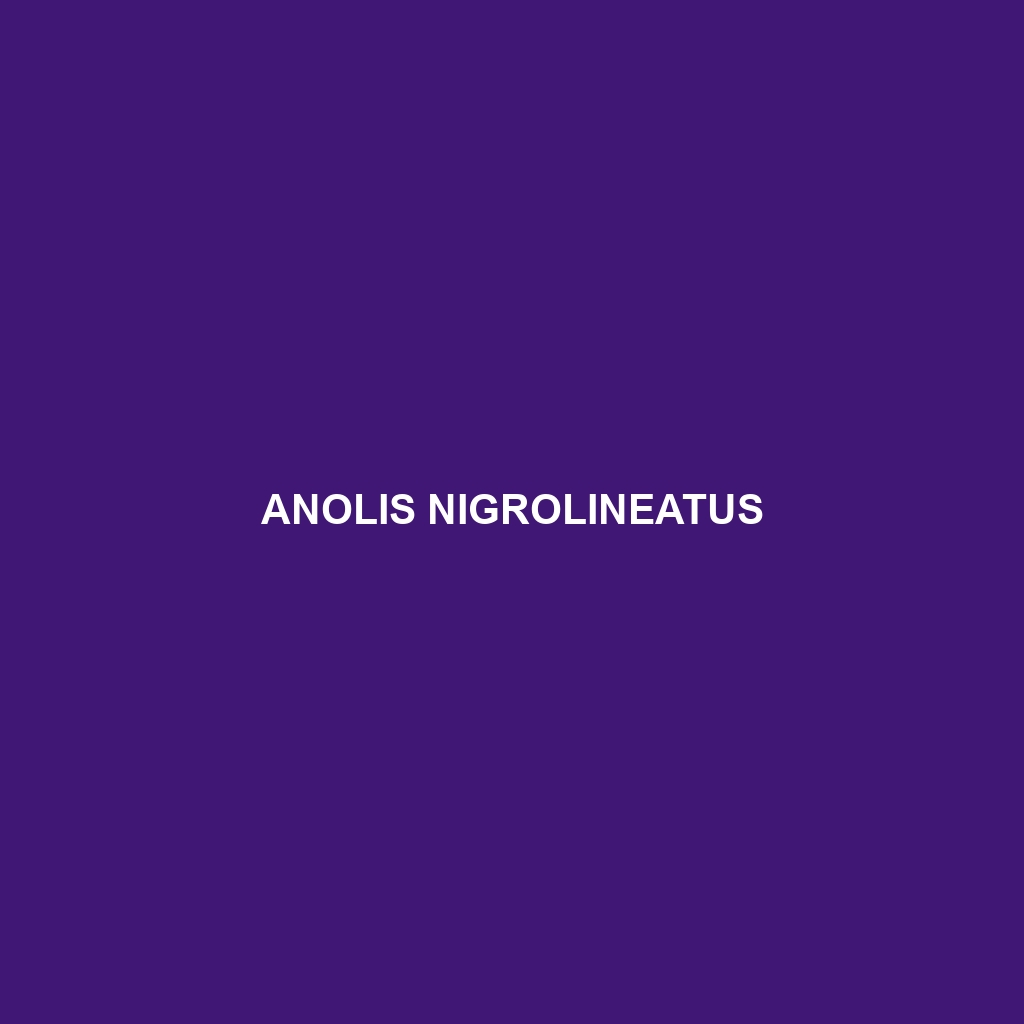Anolis nigrolineatus Species Description
Common Name: Anolis nigrolineatus
Scientific Name: Anolis nigrolineatus
Habitat: Anolis nigrolineatus, commonly known as the black-lined anole, is primarily found in the humid tropical forests of Central America, especially in countries like Nicaragua, Costa Rica, and Panama. This species typically inhabits areas with dense vegetation, often residing on tree trunks, branches, and shrubs, where it thrives in warm and moist environments.
Physical Characteristics: This medium-sized lizard can reach lengths of up to 8 inches (20 cm). Anolis nigrolineatus is characterized by its striking coloration, featuring a brown body adorned with dark, elongated lines that give it a distinctive appearance. The lizard has a slender build, long tail, and a distinctive dewlap that varies in color among individuals. Males often showcase brighter hues during territorial displays, making them easily recognizable.
Behavior: The behavior of Anolis nigrolineatus is fascinating, as these lizards are known for their territoriality and display numerous social signals. Males often engage in head-bobbing and are known to perform push-ups as a part of their courtship rituals. This species is also adept at climbing and often found basking on branches to absorb sunlight. They display a range of defensive behaviors, such as fleeing to higher grounds or utilizing their camouflaging abilities to evade predators.
Diet: Anolis nigrolineatus is an insectivore, primarily feeding on small insects and arthropods. Their diet includes ants, beetles, and other tiny invertebrates found in their forest habitat. Additionally, they may consume plant matter occasionally, leading to an omnivorous classification. Their foraging habits are generally active during the day, as they hunt and scavenge for food among the foliage and on bark.
Reproduction: The breeding season for Anolis nigrolineatus typically occurs during the wet months, when temperatures and humidity reach optimal levels. Females lay eggs, usually in clutches of 2-4, in moist, hidden locations like leaf litter or under decaying wood. The eggs incubate for several weeks before hatching, and the juveniles are independent from birth, quickly adapting to their surroundings.
Conservation Status: Currently, Anolis nigrolineatus is considered to be of Least Concern, according to the IUCN Red List. However, habitat loss due to deforestation and climate change poses potential threats to its population in certain areas. Continuous monitoring and conservation efforts are essential to protect this species from becoming vulnerable in the future.
Interesting Facts: Anolis nigrolineatus exhibits remarkable color change; their ability to alter skin tones serves both as camouflage and communication during social interactions. They are also known for their unique mating displays, which involve elaborate throat movements and color changes.
Role in Ecosystem: As an insectivore, Anolis nigrolineatus plays a vital role in controlling insect populations within its habitat. By keeping pest numbers in check, these lizards contribute to the overall health of their ecosystem. Additionally, they serve as prey for various birds and larger reptiles, forming an important part of the food web in tropical forest environments.
